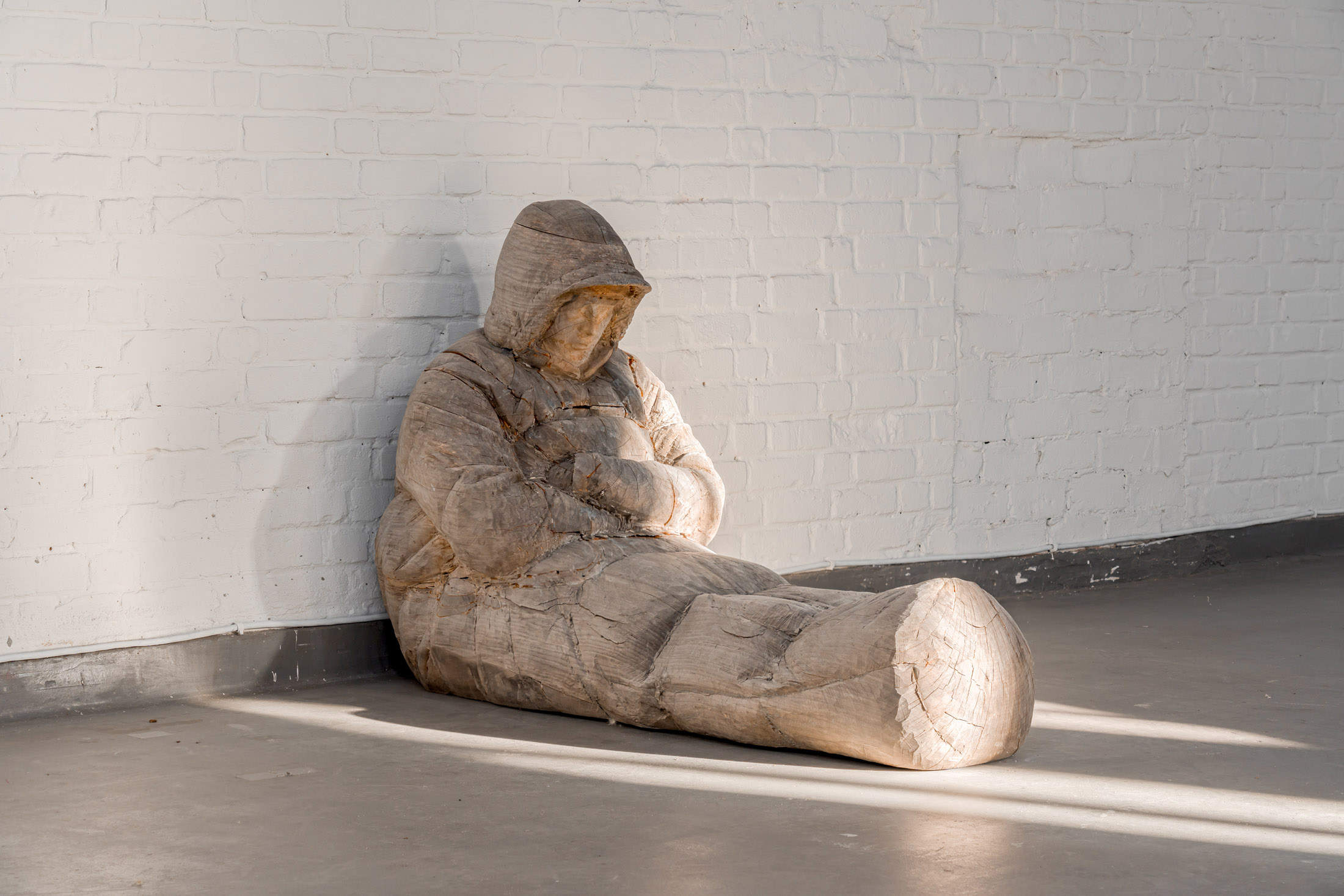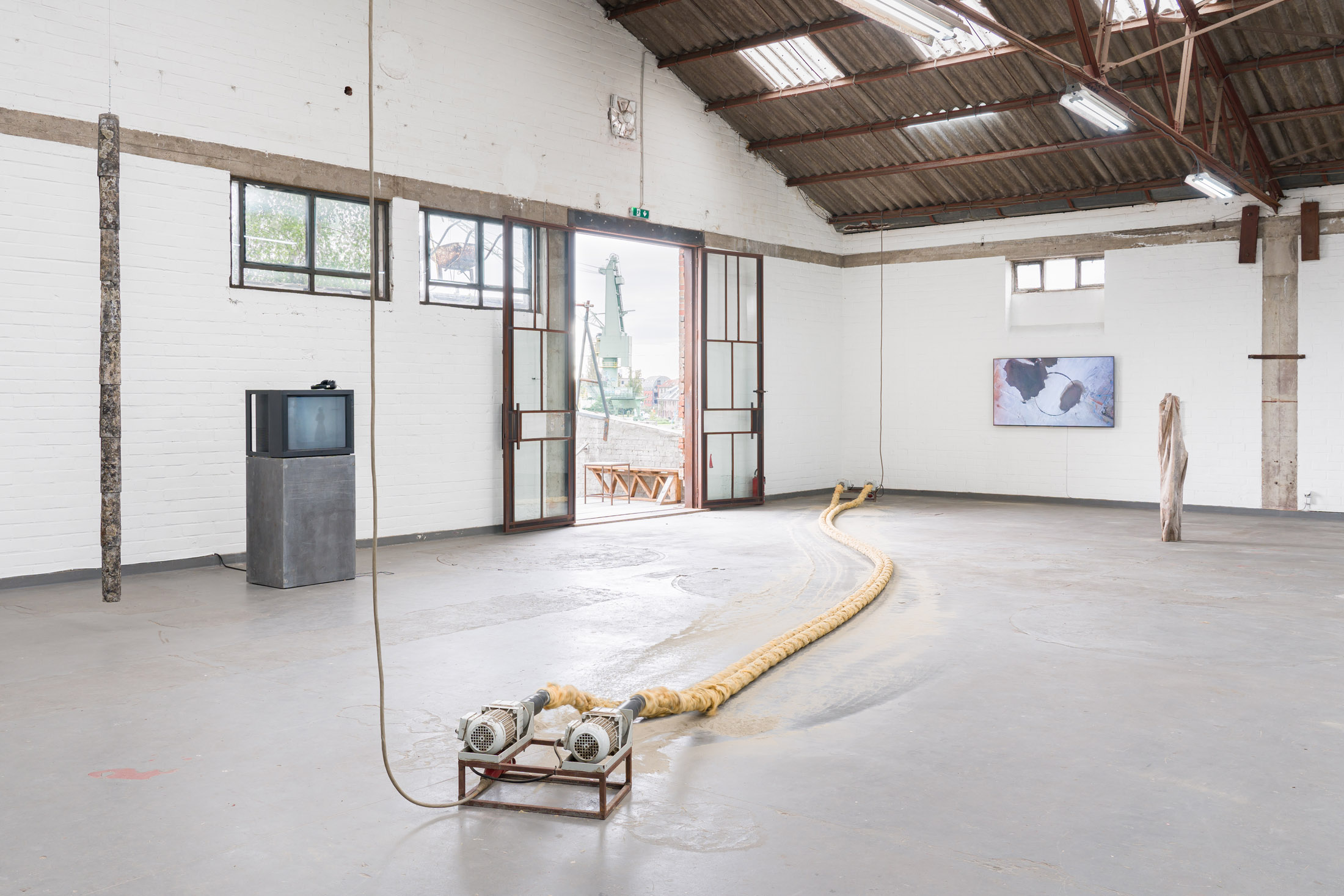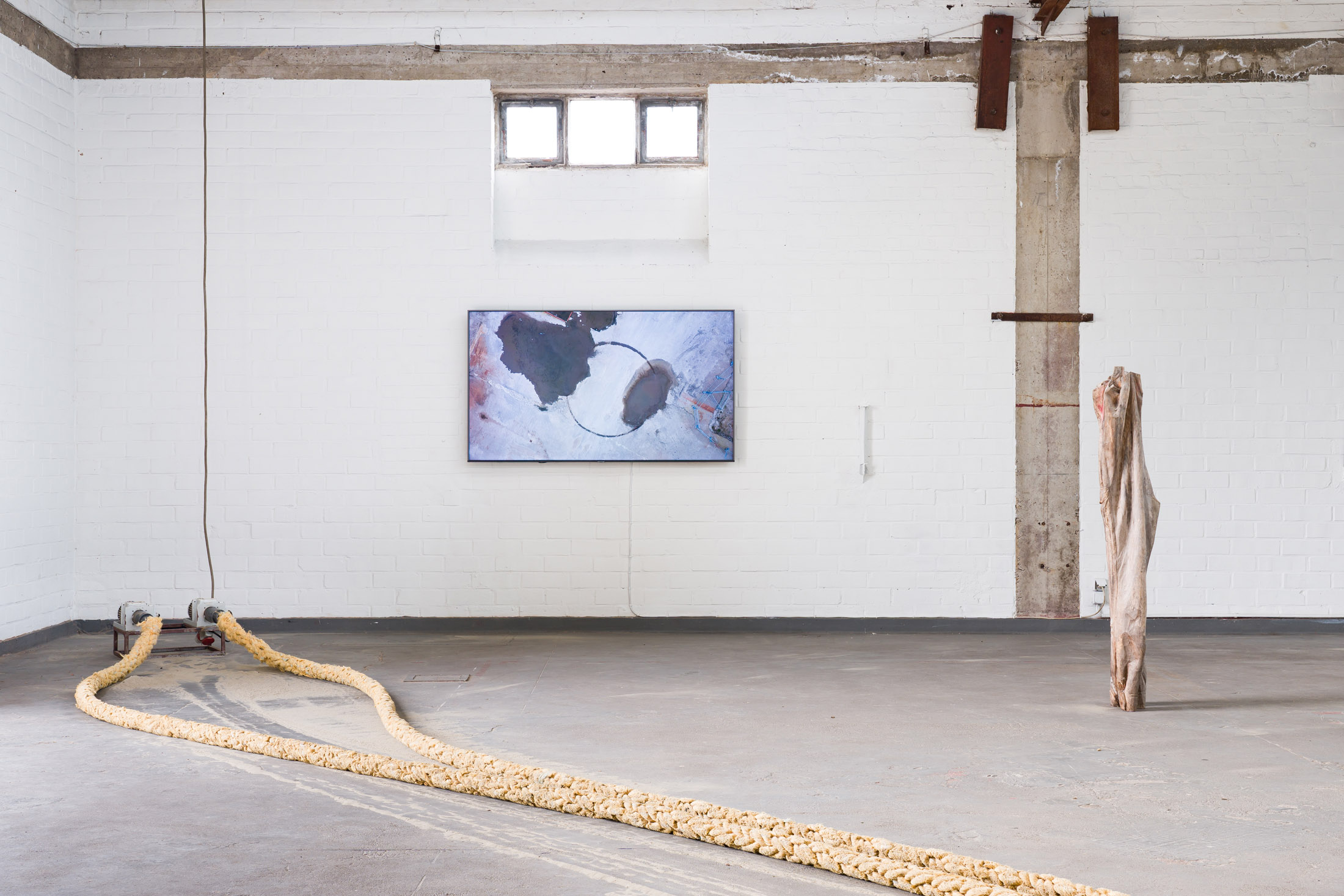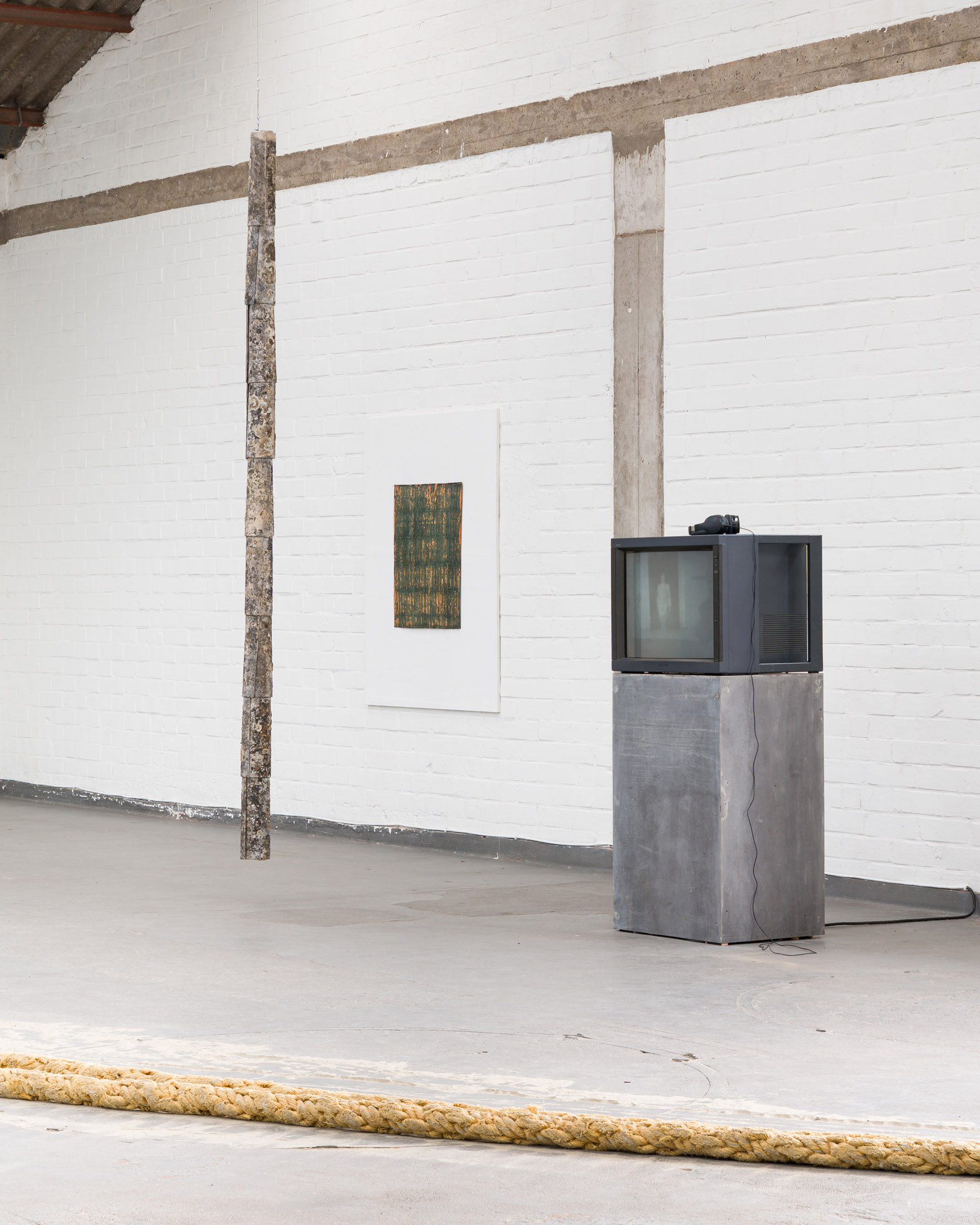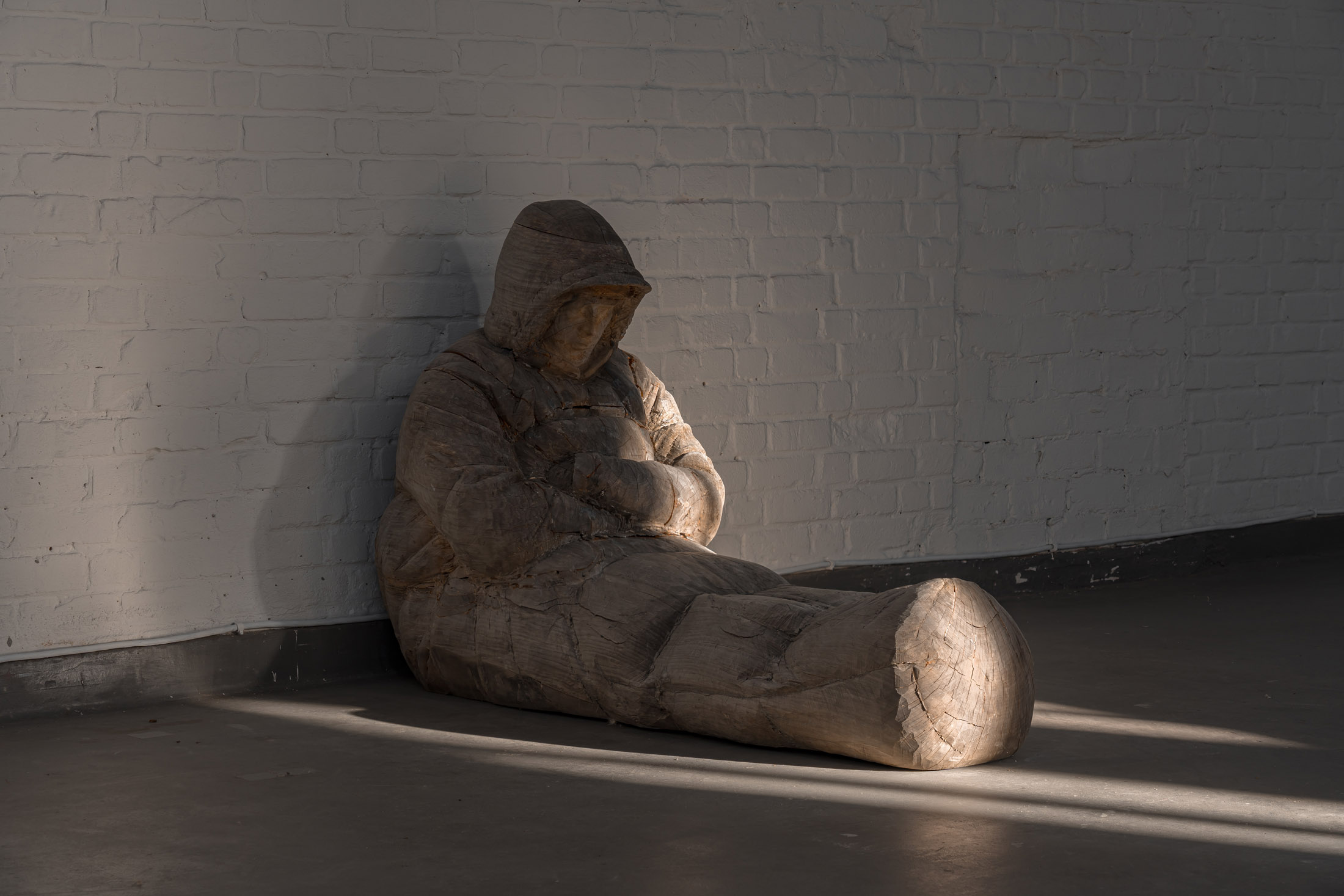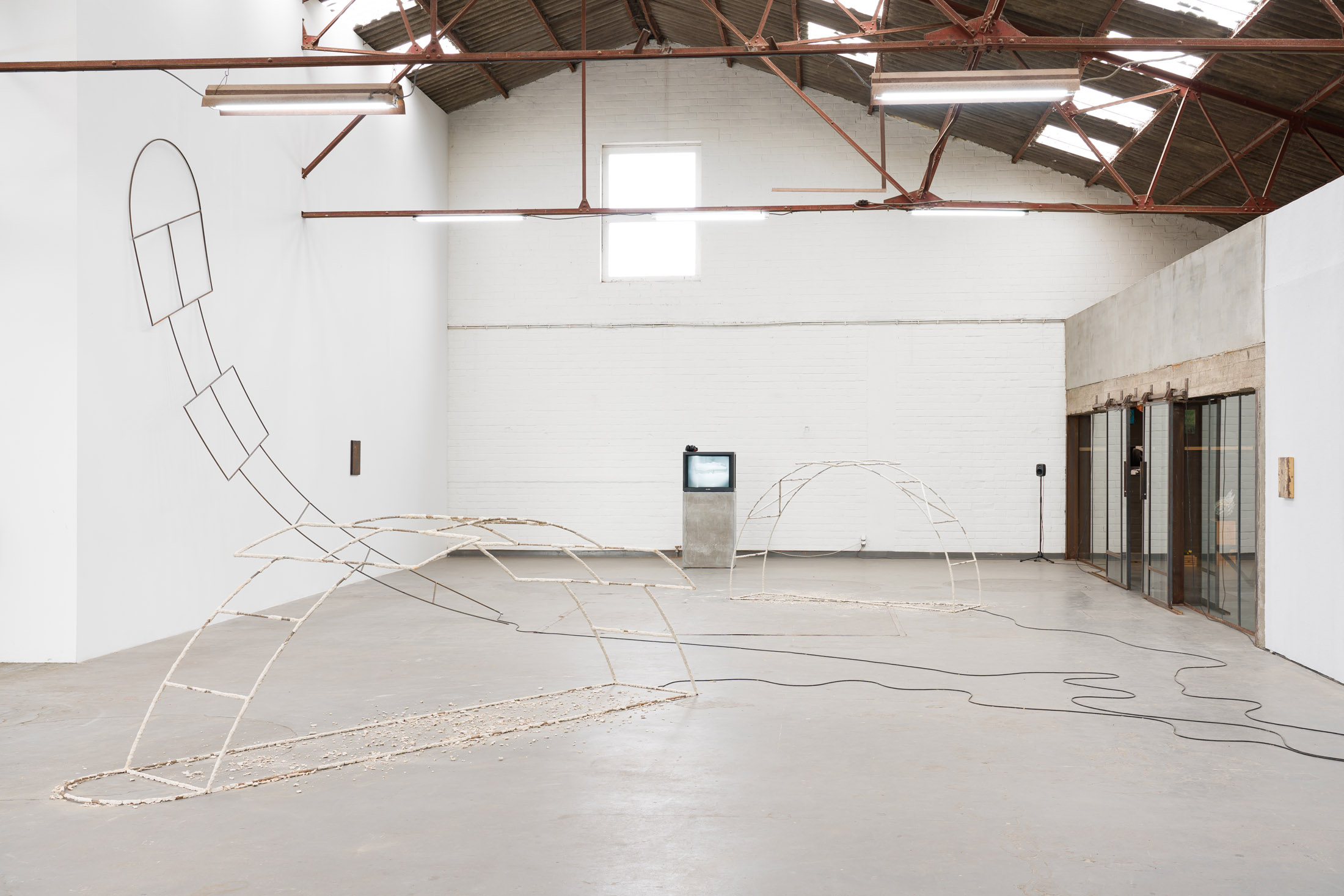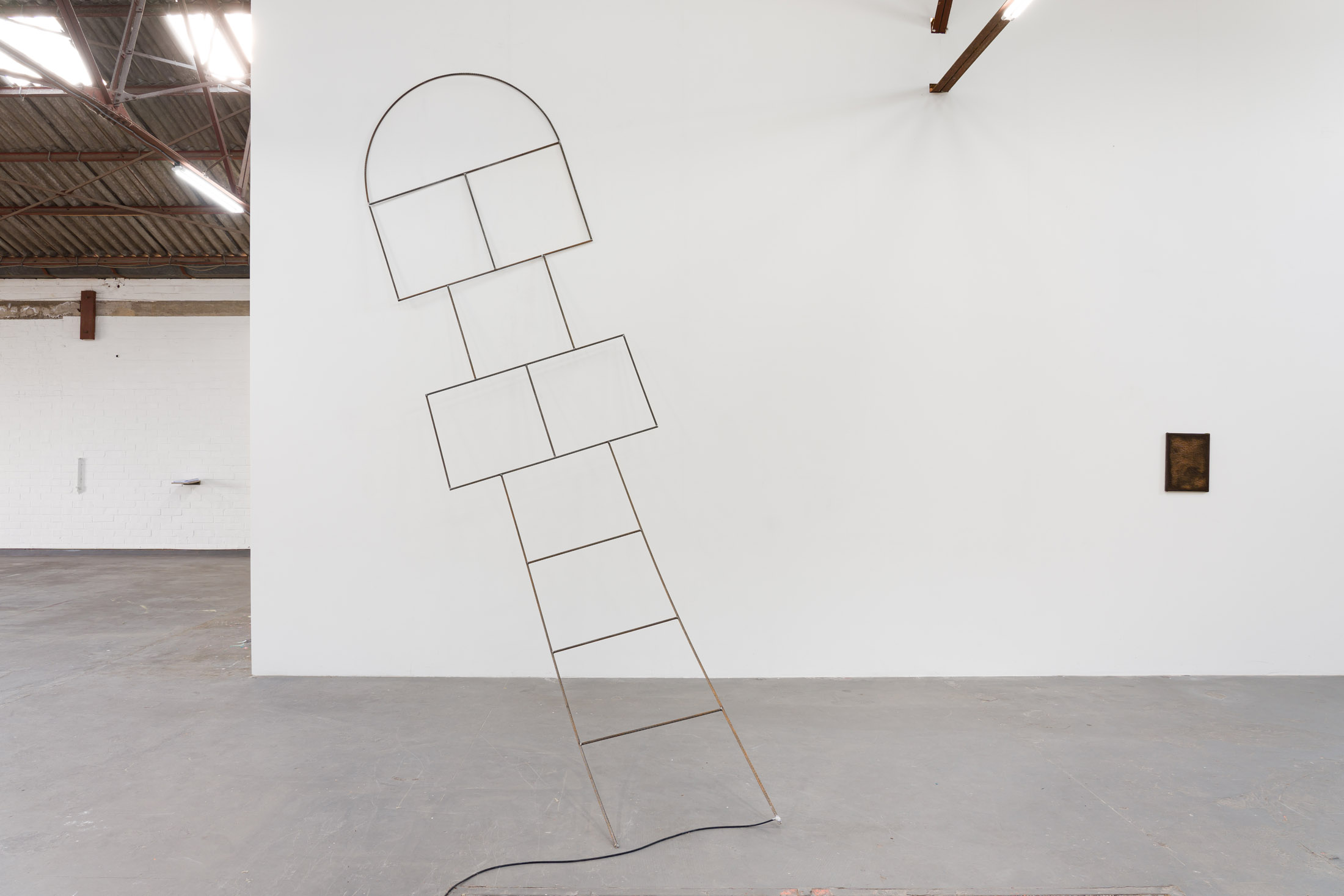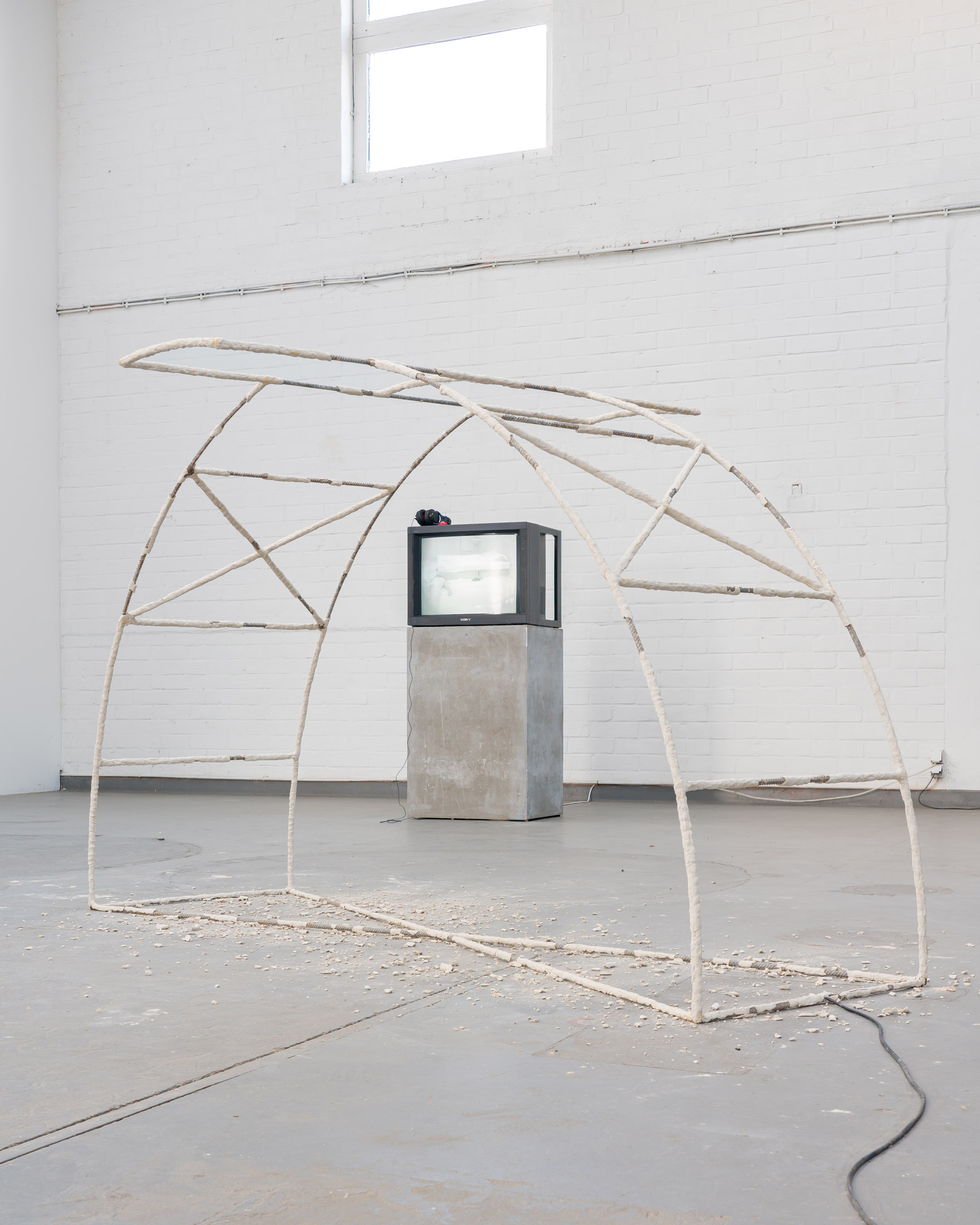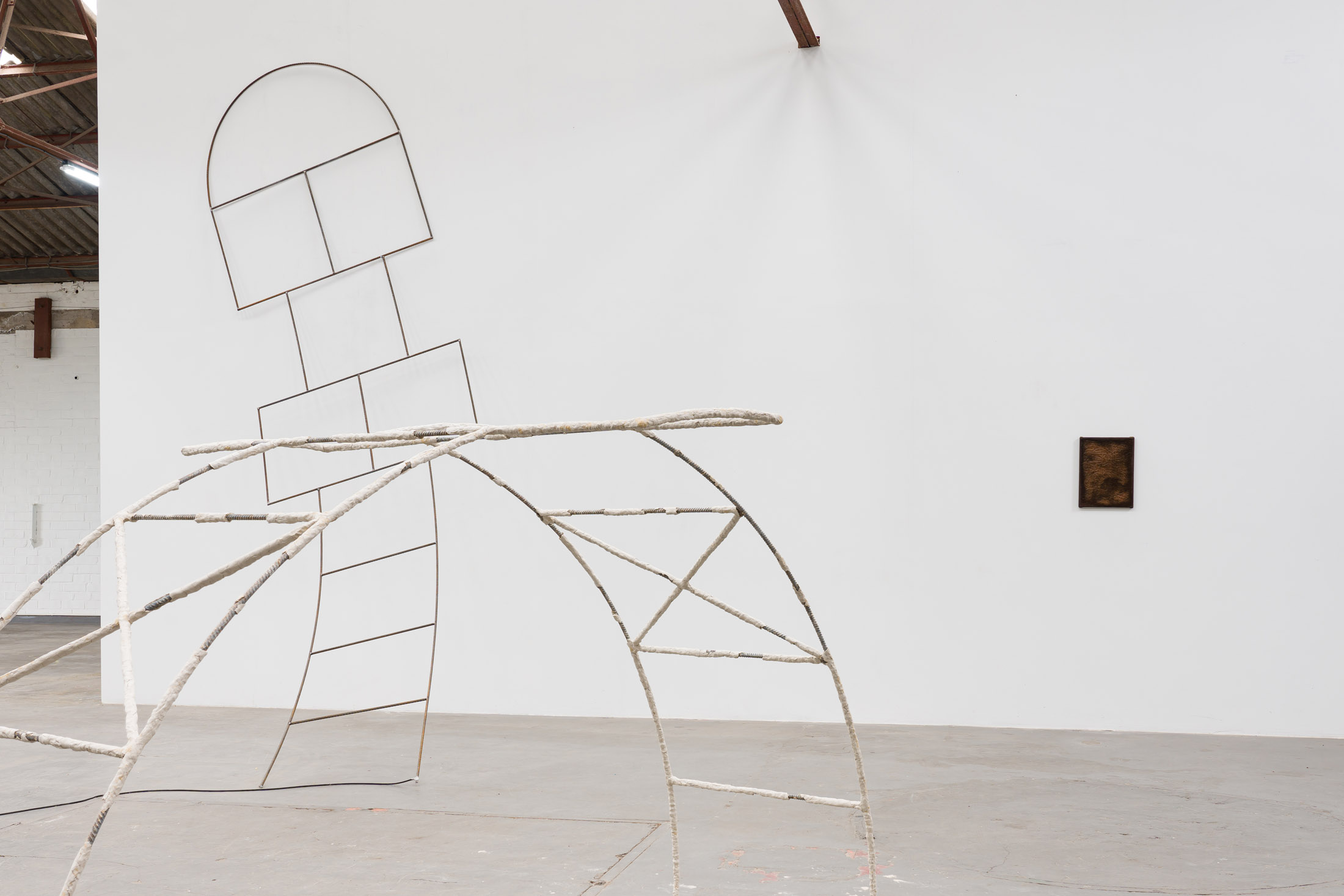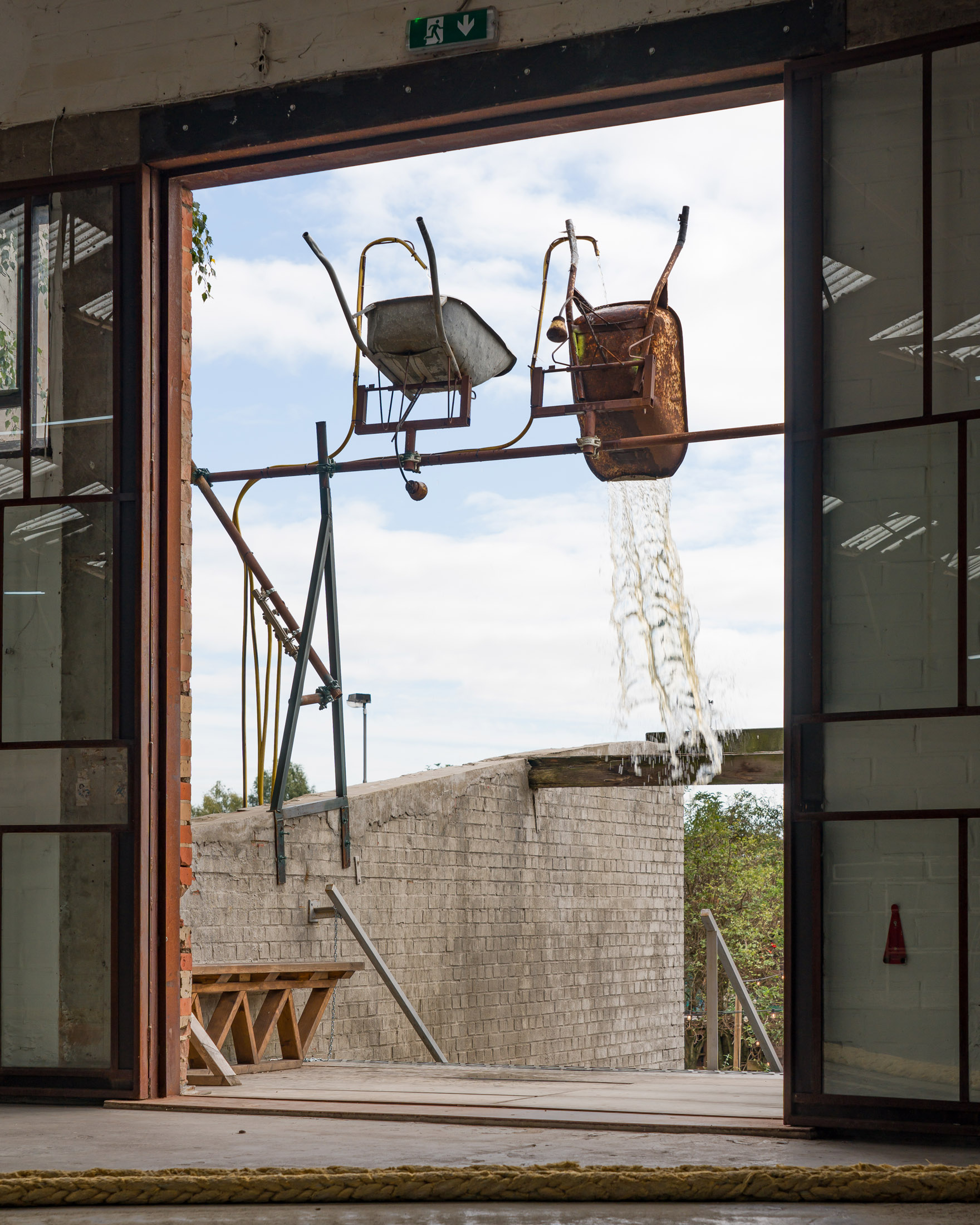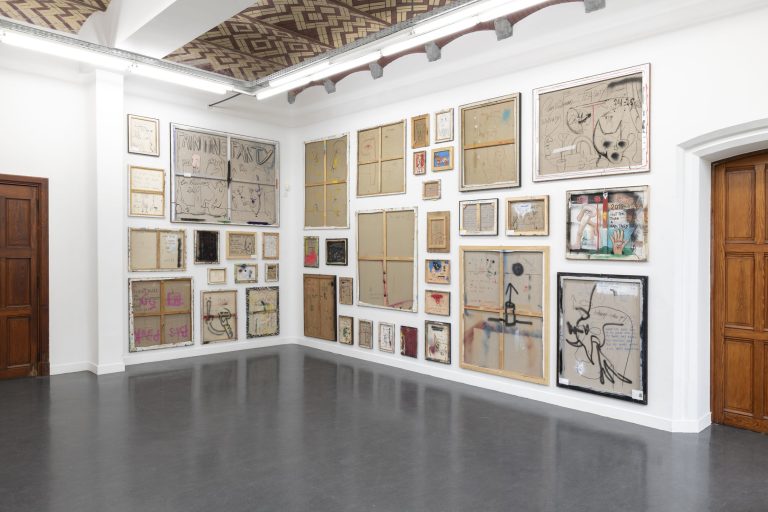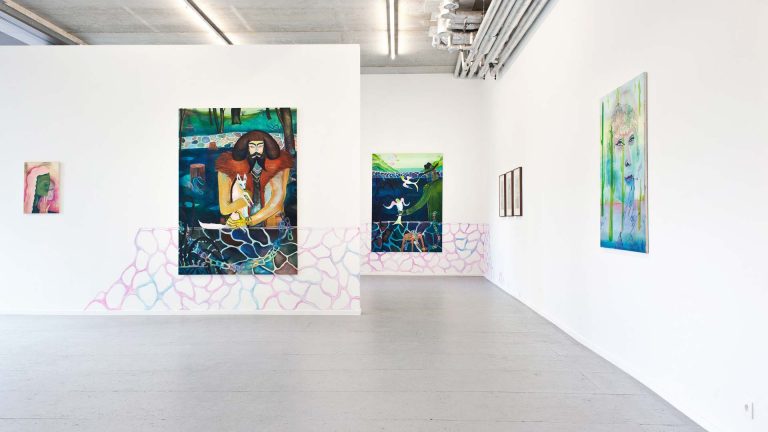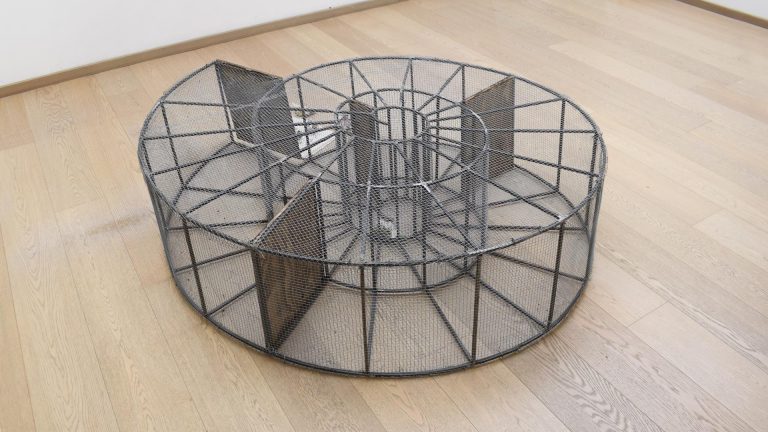Artists: Willem Boel, Edith Dekyndt, Lili Dujourie, Zoro Feigl, Jeroen Jongeleen, Angyvir Padilla, Stefan Papco & Ulay
Exhibition title: Ravel Ravel
Venue: Ontsteking, Ghent, Belgium
Date: September 22 – October 15, 2023
Photography: all images copyright and courtesy of the artists and Ontsteking, Ghent
Ovid Metamorphoses – Book XV 176-198 “Eternal Flux” “‘Since I have embarked on the wide ocean, and given full sails to the wind, I say there is nothing in the whole universe that persists. Everything flows, and is formed as a fleeting image. Time itself, also, glides, in its continual motion, no differently than a river. For neither the river, nor the swift hour can stop: but as wave impels wave, and as the prior wave is chased by the coming wave, and chases the one before, so time flees equally, and, equally, follows, and is always new. For what was before is left behind: and what was not comes to be: and each moment is renewed.”
The verb “to ravel[1]” allows us to assume that our subject matter has the ability to present itself as different variants of its true form or meaning. The act of unraveling takes us on an escapade into the different layers of possible realities. These, sometimes endless perspectives inherently carry the notion of change within their nature. This notion of change can be measured in time – past-present-future – in relation to our own personal perception, making it harder to define.
Having to grasp an ever-changing subject makes us face the topic of impermanence and possibly even our own transience. To prescind from our very own limits of understanding while navigating through the constant flux of the world, we have to place ourselves within the plane of time, from beginning to end. The Latin phrase “Amor Fati” or “love of fate” can be used to describe the gesture of acceptance towards the unavoidable end. There are other examples of this idea, like the Japanese idiom ‘Mono no Aware’ which is an important element of their culture’s aesthetic ideals. Hard to translate, but best described as “the pathos of things”, it describes the bittersweet feeling that carries beauty within, in relation to the ever-changing nature of things. At its core, Mono no Aware acknowledges the impermanence of all things in the world and the emotions that arise from this realization. It’s a sensitivity to the ephemeral nature of life and a recognition that moments of beauty and significance are often intertwined with their fleetingness. This understanding can evoke a sense of nostalgia, melancholy, and even a heightened appreciation for the present moment. The willingness to embrace this ambivalence brings us closer to understanding the essential truth of things. Some thinkers, including Martin Heidegger, suggest that the awareness of one’s mortality is what gives life its significance and urgency, leading to a more authentic way of being. The finite nature of human existence, with its inevitable end, shapes how individuals make choices, seek meaning, and engage with the world.
When it comes to an artwork and a spectator that’s perceiving it, the issue of temporality can be projected onto both. As mentioned, it has the potential to change the attitude of the viewer, by putting them in the position of a witness, someone who’s aware that the physical nature of an object means gradual change or decay even if it’s meant to be static. The source of transformation does not have to be intentional and can come from various sources like the artist, the spectator themselves, time or nature et cetera.
On the other hand, performances that are live events, unfolding in real time and space, leave nothing, but memories and documentation behind. The ephemeral nature of performance art underscores the idea that artistic experiences can be both impactful and transient, mirroring the broader experience of life itself. The pieces seen within the framework of ‘Ravel Ravel’ allow us to approach the topic of impermanence from various standpoints. In some cases, the triad of birth-death-rebirth provides a cyclical quality, and in others we find ourselves facing a dilemma similar to the ship of Theseus[2]. If integral parts of an artwork are constantly changing, creating new forms at the expense of the previous work is it really the same object?
-Hanna Júlia Erdősi
[1] As a word “ravel” is also a contronym, meaning that it has two meanings that are opposite of each other. It can describe both ‘tangling’ and ‘untangling’
[2] “The Ship of Theseus is a thought experiment about whether an object which has had all of its original components replaced remains the same object.”
Lili Dujourie, Hommage à… I, 1972, single channel video , 00:21:18
Ravel Ravel, 2023, exhibition view, Ontsteking, Ghent
Ravel Ravel, 2023, exhibition view, Ontsteking, Ghent
Ravel Ravel, 2023, exhibition view, Ontsteking, Ghent
Ravel Ravel, 2023, exhibition view, Ontsteking, Ghent
Štefan Papčo, Zuzana_Citizens, 2019, wood, 91 x 60 x 145 cm
Štefan Papčo, Zuzana_Citizens, 2019, wood, 91 x 60 x 145 cm
Ravel Ravel, 2023, exhibition view, Ontsteking, Ghent
Ravel Ravel, 2023, exhibition view, Ontsteking, Ghent
Ravel Ravel, 2023, exhibition view, Ontsteking, Ghent
Ravel Ravel, 2023, exhibition view, Ontsteking, Ghent
Ravel Ravel, 2023, exhibition view, Ontsteking, Ghent
Ravel Ravel, 2023, exhibition view, Ontsteking, Ghent
Angyvir Padilla, De allá, para acá y de otros lados (From there, to here and elsewhere), 2021, performance and installation, raw clay and steel rods, variable dimensions
Ravel Ravel, 2023, exhibition view, Ontsteking, Ghent
Ravel Ravel, 2023, exhibition view, Ontsteking, Ghent
Willem Boel, Deer Fountain #05, 2023, wheelbarrows, steel pipes, variable dimensions
Willem Boel, Deer Fountain #05, 2023, wheelbarrows, steel pipes, variable dimensions
Willem Boel, a well balanced painting #05 and a well balanced painting #06, 2023, paint on canvas, 225 x 130 cm

